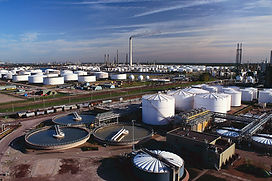
Özlem Academy Education Consultancy Inc.
CONTACT US FOR YOUR QUESTIONS
Address : Tatlısu Mah. Pakdil Sok. PERSPECTIVE Plaza No:5 Floor:1 Flat:3, Şerifali Cd., 34774 Umraniye/Istanbul
Tel Office: +90 (216) 594 55 25
Mobile: +90 (533) 380 83 72

Our services
INTERNAL EMERGENCY PLAN
PREPARATION SERVICE
With our expert staff, we offer the highest quality Internal Emergency Plan preparation service.
You can entrust your "Internal Emergency Plan" studies within the scope of Seveso Directive to us!
What is the Seveso Directive?
The Seveso directive is a European Union regulation that aims to reduce possible risks during the use and storage of hazardous chemicals in businesses. This directive aims to manage the effects of accidents caused by hazardous materials in large-scale industrial plants.
Requirements and Application:
-
Businesses should make their own risk assessments based on the amount and characteristics of hazardous chemicals.
-
Businesses should identify hazard scenarios and develop contingency plans.
-
As a result of risk assessments, the security measures to be taken should be determined.
-
Businesses must publicly report their facilities within certain limits.

We Prepare Your Internal Contingency Plans in the Best Way.
"Identify Risks, Stay Safe"!
Purpose of Internal Emergency Plan:
The internal emergency plan has the following objectives:
-
To minimize the effects of possible accidents.
-
Limiting damage to people, the environment and property.
-
Organizing emergencies.
Objectives of the Internal Emergency Plan:
The main objectives of the internal contingency plan are:
a) Preventing or minimizing damage: Preventing or minimizing damage to people, the environment and property is one of the main objectives of the plan.
b) Informing: It is ensured that people who are likely to be affected by the accident are informed about the correct actions and safety measures.
c) Safe Evacuation of Personnel and First Aid: During an emergency, it is ensured that the personnel are evacuated safely and first aid is provided to those affected by the accident.
ç) Cooperation between Institutions: Cooperation is ensured with other institutions that will participate in the emergency response.
d) Coordination and Control: Criteria for the coordination of personnel and the use of facilities and resources are defined and controlled in order to cope with dangerous situations.
e) Improvement of the Environment and the Organization: After a major accident, the environment and the organization are cleaned and improved.
Internal Emergency Plan Preparation:
The following factors are taken into account when drawing up the internal emergency plan:
a) The capacity, complexity and size of the organization.
b) The nature of the processes in operation and the materials and equipment used.
c) The number of personnel working in the enterprise and the availability of resources.
d) Adequacy of emergency response resources. d) Location of the establishment.
In the preparation of the plan, it is also necessary to determine the minimum trainings and training needs for each response scenario, to record contact information and to create separate plans for major accident scenarios.
In addition, regulations for emergencies cover 24 hours a day and take into account different events and force majeure. These arrangements include vacation, illness, shift change, maintenance, plant shutdown and commissioning.
Finally, the plan also states who will make statements to the press and public after an accident.
Outlines:
Here are the key facts and outlines of an organization's emergency management:
-
Organization Information: Information is given about the name of the organization, its facilities, main fields of activity, process flow chart and dangerous substances. It also provides a summary of the organization's reporting system and internal/external hazards.
-
Neighboring Organizations and Environment:Information is given about neighboring organizations and the environment of the organization. This is important for emergency management.
-
Facility Layout and Satellite Image:A site plan and satellite view are presented showing the location of the facilities.
-
Major Accident Scenario List:A list of major accident scenarios is presented. These scenarios describe events that need to be prepared for emergency response.
-
Emergency Response Scenarios: Emergency response scenarios are prepared and an intervention plan is filled for each scenario. These scenarios determine how the emergency will be managed.
-
Emergency Management System:The emergency management system defines how emergencies will be managed and coordinated. Includes:
-
emergency manager
-
crime scene coordinator
-
emergency management center
-
Communication and coordination system
-
Internal and external resources
-
-
Resources for Response Operations: Resources required for emergency response are defined, internal and external resources are listed, necessary equipment and tools are listed.
-
Communication:The emergency communication system is defined, it is specified how to make announcements and how to manage communication.
-
Steps to be Followed in Emergency Situations:The steps to be followed in an emergency are listed in detail. These steps explain the management of the emergency step by step.
-
Other/Additional Information: Special or additional information that is not in the format is included under this heading.
This summary contains the key components of an organization's emergency management plan. Each organization develops and implements this plan according to their specific needs.

Employer's Obligation to Take Action
Regulation on Preventing Major Industrial Accidents and Reducing Their Effects
Article 6:
General Obligation of the Operator
The operator is obliged to take all necessary measures to prevent major accidents and, in cases where it cannot be prevented, to limit their effects in a way that causes the least damage to the environment and people.









